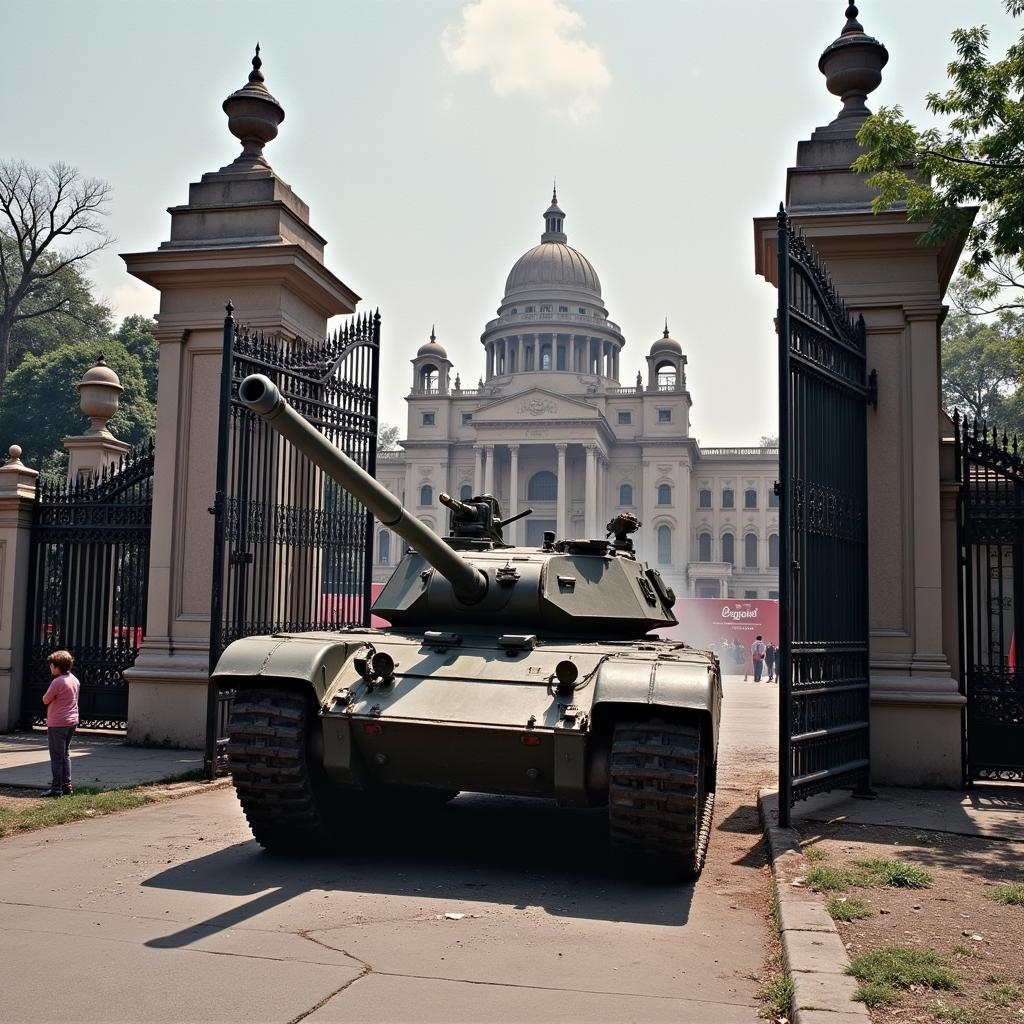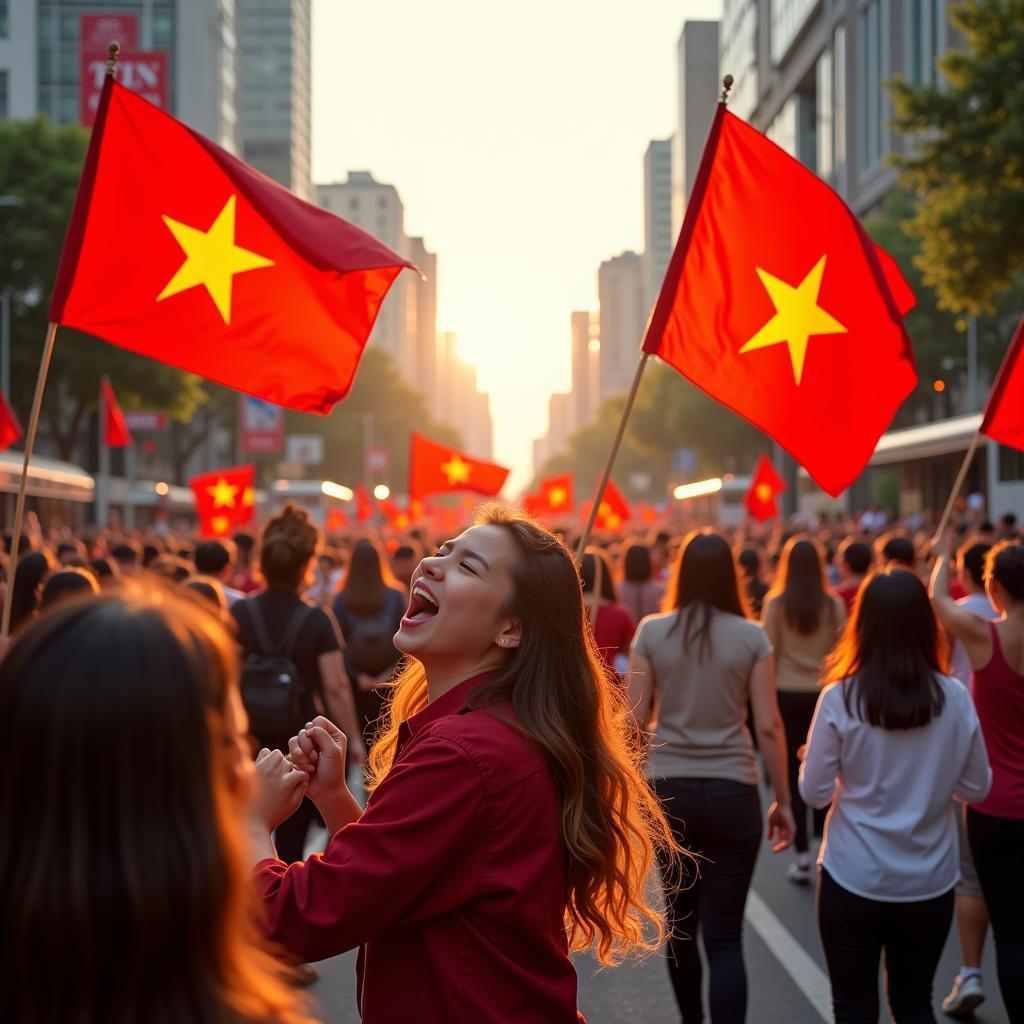The fall of Saigon on April 30, 1975, marked a pivotal moment in Vietnamese history. Known in Vietnam as Ngày Giải Phóng Miền Nam, or Liberation Day, this date signifies the end of the Vietnam War and the beginning of the country’s reunification. While the event holds immense historical weight, its English translation, “Liberation Day,” often leaves non-Vietnamese speakers seeking a deeper understanding. This article delves into the significance of April 30th, exploring its historical context, cultural impact, and international implications.
 Tank entering Independence Palace on Liberation Day
Tank entering Independence Palace on Liberation Day
The Vietnam War: A Prelude to Liberation
To comprehend the significance of “Ngày Giải Phóng Miền Nam,” one must first understand the complex history of the Vietnam War. The war, lasting over two decades, stemmed from the division of Vietnam into communist North Vietnam and US-backed South Vietnam. The conflict, fueled by Cold War tensions, witnessed immense bloodshed and devastation, deeply scarring the Vietnamese people.
 Celebrating Reunification Day
Celebrating Reunification Day
April 30, 1975: The Fall of Saigon
The capture of Saigon, the capital of South Vietnam, by the North Vietnamese Army on April 30th, 1975, effectively ended the war. This victory for the North Vietnamese paved the way for the reunification of Vietnam under communist rule. The day, forever etched in Vietnam’s national memory, is officially celebrated as Reunification Day, marking the country’s hard-fought independence and unity.
“Ngày Giải Phóng Miền Nam”: More Than Just “Liberation Day”
While “Liberation Day” serves as a direct translation of “Ngày Giải Phóng Miền Nam,” it fails to encompass the full breadth of emotions and historical weight the day carries for the Vietnamese. “Giải Phóng,” meaning liberation, signifies the end of colonial rule and foreign intervention, while “Miền Nam,” meaning South, highlights the reunification of a divided nation. Therefore, “Reunification Day” might be a more accurate and nuanced translation, reflecting the day’s significance as a symbol of national unity and the end of a painful chapter.
 Family reunion after the war
Family reunion after the war
Legacy and Commemoration of Reunification Day
Today, Reunification Day is celebrated annually in Vietnam with parades, ceremonies, and cultural events. It serves as a reminder of the country’s resilience and the sacrifices made for independence and unity. The day also provides an opportunity to reflect on the war’s lasting impact and to promote peace and reconciliation.
Frequently Asked Questions
What is the significance of April 30th in Vietnamese history?
April 30th, 1975, marks the fall of Saigon and the end of the Vietnam War, leading to the reunification of Vietnam. It’s a day of great historical and cultural significance, celebrated as Reunification Day.
Why is it important to understand the context of “Ngày Giải Phóng Miền Nam”?
Understanding the historical context helps appreciate the depth of emotions associated with the day. It’s not just about liberation but also about national reunification and overcoming a painful past.
How is Reunification Day celebrated in Vietnam?
Reunification Day is a national holiday in Vietnam, celebrated with parades, flag-waving ceremonies, cultural events, and family gatherings. It’s a time for remembrance, reflection, and celebration of unity.
Need More Information?
For further insights into Vietnamese history and culture, you can explore:
- Giải toán đố lớp 1: This resource offers a fascinating glimpse into Vietnamese education and problem-solving approaches.
- Giải bài tập sinh 9 bài 1: This link provides insights into Vietnamese biology curriculum, showcasing the emphasis on scientific knowledge.
Get in Touch
Have questions or need further assistance? Contact us!
- Phone: 02033846993
- Email: [email protected]
- Visit us: X2FW+GGM, Cái Lân, Bãi Cháy, Hạ Long, Quảng Ninh, Việt Nam
We are available 24/7 to assist you!
